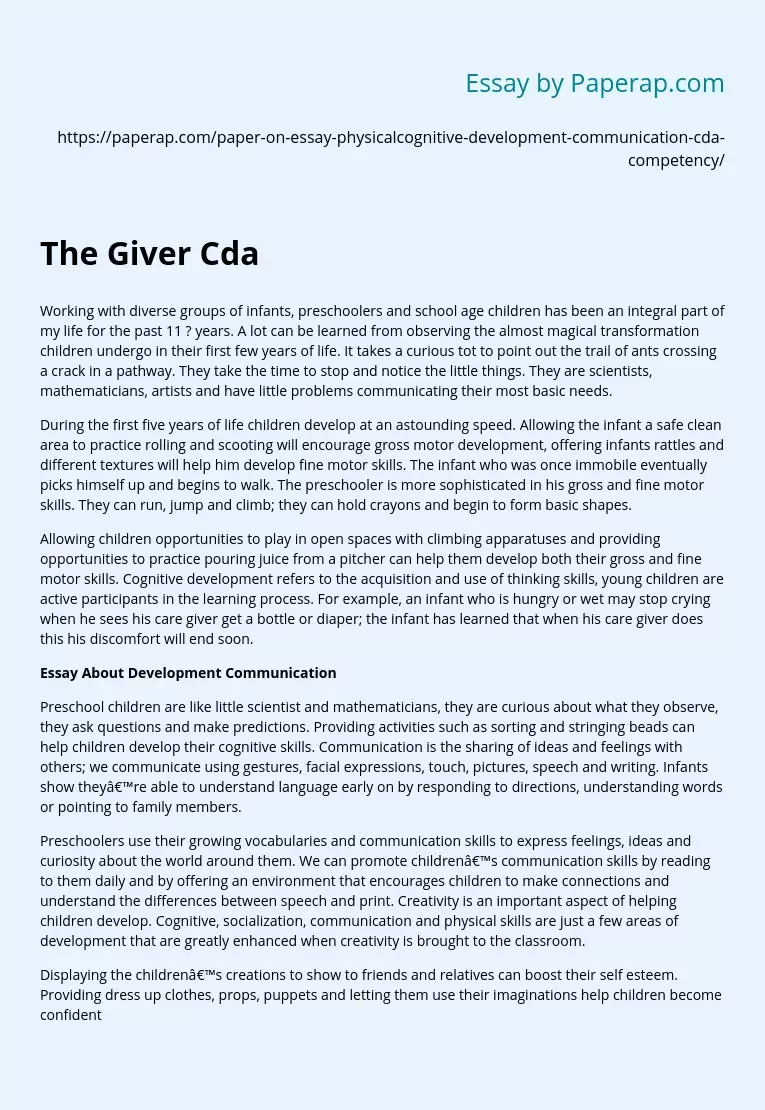My 11-Year Journey with Diverse Age Groups
Working with diverse groups of infants, preschoolers and school age children has been an integral part of my life for the past 11 ? years. A lot can be learned from observing the almost magical transformation children undergo in their first few years of life. It takes a curious tot to point out the trail of ants crossing a crack in a pathway. They take the time to stop and notice the little things. They are scientists, mathematicians, artists and have little problems communicating their most basic needs.
During the first five years of life children develop at an astounding speed. Allowing the infant a safe clean area to practice rolling and scooting will encourage gross motor development, offering infants rattles and different textures will help him develop fine motor skills. The infant who was once immobile eventually picks himself up and begins to walk. The preschooler is more sophisticated in his gross and fine motor skills. They can run, jump and climb; they can hold crayons and begin to form basic shapes.
Allowing children opportunities to play in open spaces with climbing apparatuses and providing opportunities to practice pouring juice from a pitcher can help them develop both their gross and fine motor skills. Cognitive development refers to the acquisition and use of thinking skills, young children are active participants in the learning process. For example, an infant who is hungry or wet may stop crying when he sees his care giver get a bottle or diaper; the infant has learned that when his care giver does this his discomfort will end soon.
Essay About Development Communication
Preschool children are like little scientist and mathematicians, they are curious about what they observe, they ask questions and make predictions. Providing activities such as sorting and stringing beads can help children develop their cognitive skills. Communication is the sharing of ideas and feelings with others; we communicate using gestures, facial expressions, touch, pictures, speech and writing. Infants show they’re able to understand language early on by responding to directions, understanding words or pointing to family members.
Preschoolers use their growing vocabularies and communication skills to express feelings, ideas and curiosity about the world around them. We can promote children’s communication skills by reading to them daily and by offering an environment that encourages children to make connections and understand the differences between speech and print. Creativity is an important aspect of helping children develop. Cognitive, socialization, communication and physical skills are just a few areas of development that are greatly enhanced when creativity is brought to the classroom.
Displaying the children’s creations to show to friends and relatives can boost their self esteem. Providing dress up clothes, props, puppets and letting them use their imaginations help children become confident in themselves because they have had an opportunity for self expression. Although having a classroom that consists of mixed-aged children can be difficult to handle, I’ve learned that children learn from each other.
Younger children try to model the older children’s behavior such as developing an early interest in using the bathroom as well as in printing and reading. Older children tend to be more sensitive to the needs of the younger children and feel a sense of pride when they can help a younger peer in distress. Overall, having a positive attitude, being informed, planning ahead, seeking support when needed and maintaining a consistent routine are the most important ingredients in successfully cultivating an environment in which children will excel.
My 11-Year Journey with Diverse Age Groups. (2019, Dec 05). Retrieved from https://paperap.com/paper-on-essay-physicalcognitive-development-communication-cda-competency/

